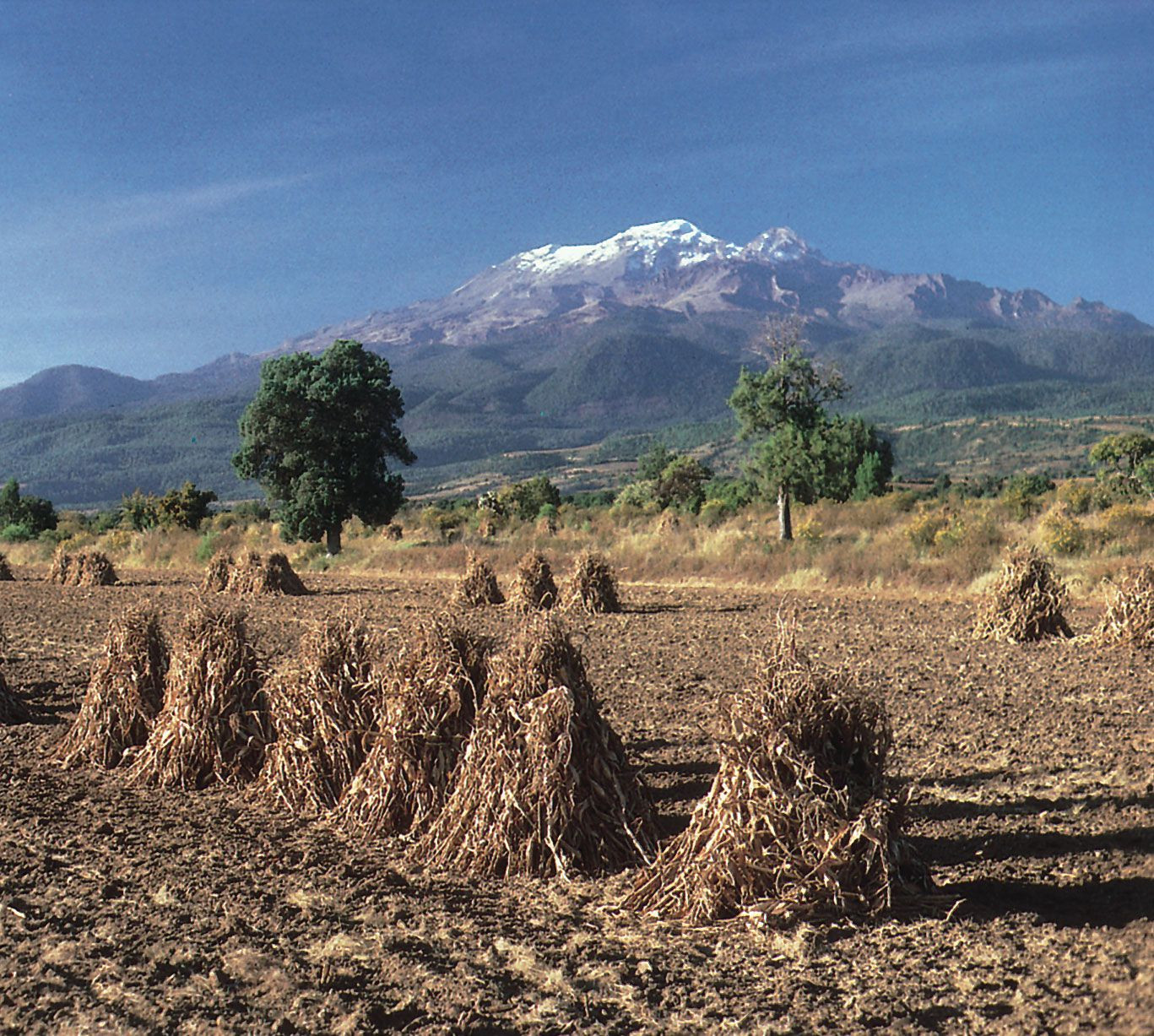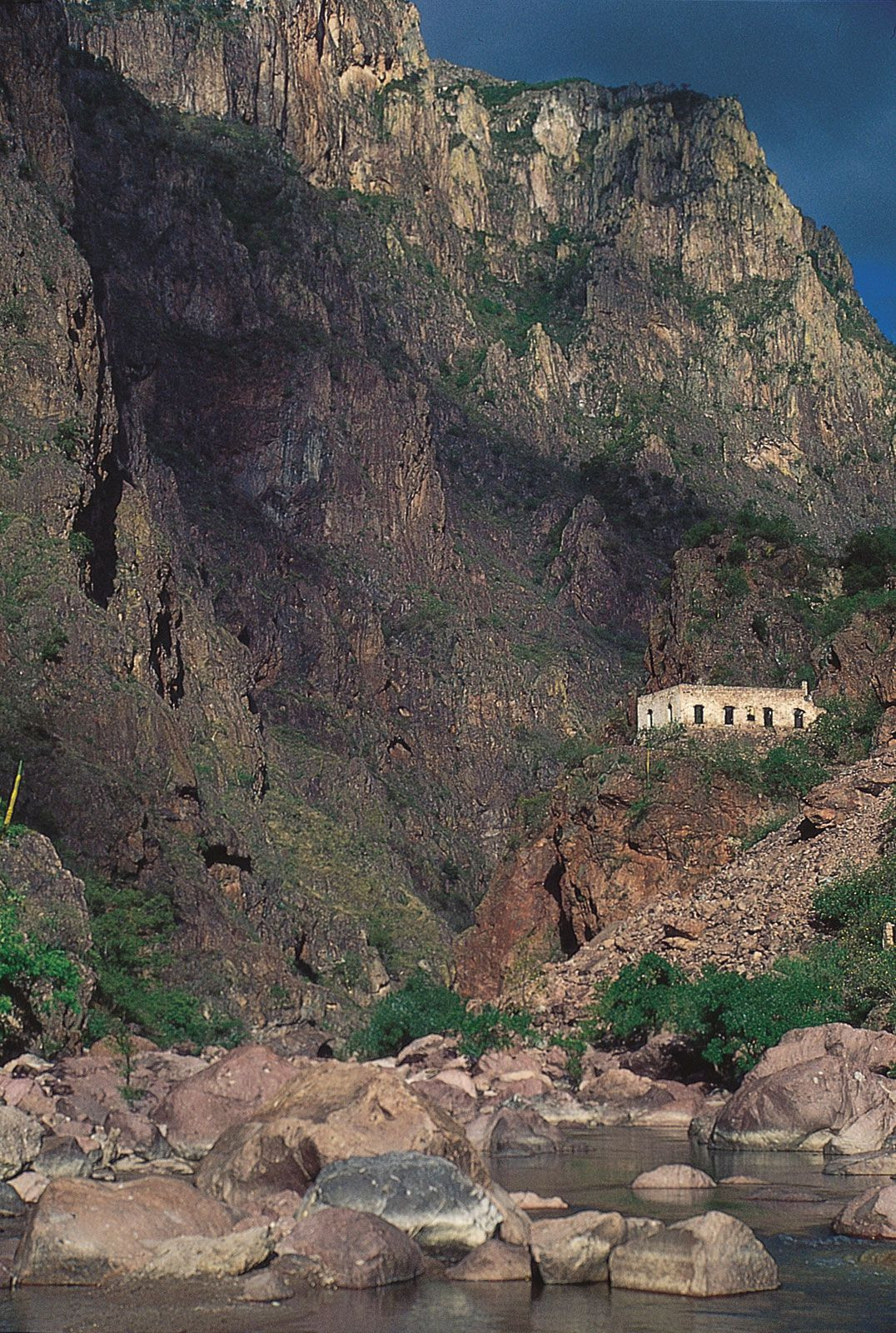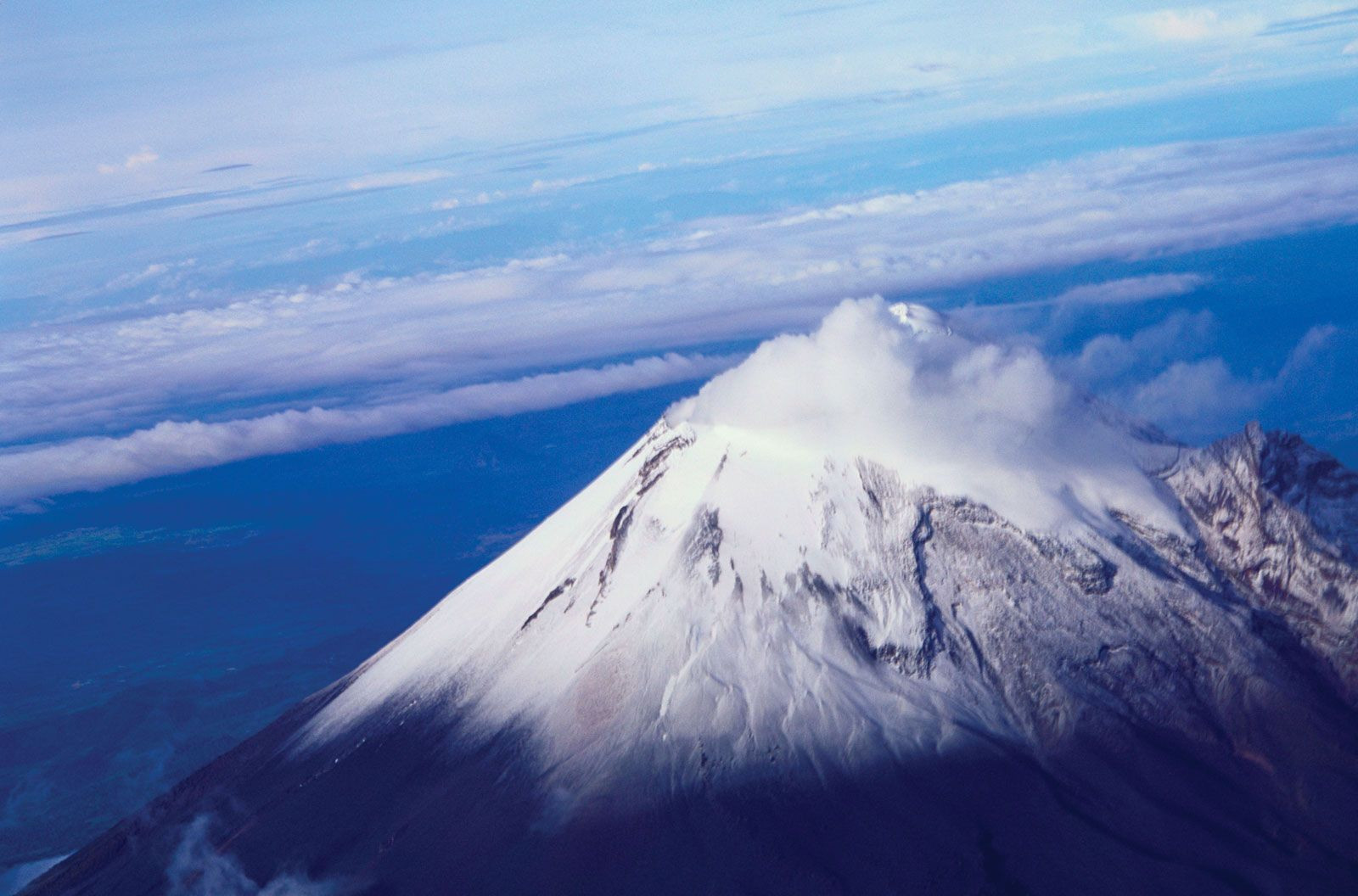Mexico’s location is in the southern portion of North America, offering a vibrant tapestry of culture, geography, and opportunities for LGBTQ+ travelers; gaymexico.net can help you navigate it all. The country’s diverse landscapes, from arid deserts to lush rainforests, provide a stunning backdrop for exploration and adventure, especially for those seeking welcoming and inclusive destinations. Discover Mexico’s latitude, its hemisphere, neighboring countries and LGBTQ+ safe spaces with our travel guide, and create memories that will last a lifetime.
1. Understanding Mexico’s Location: A Comprehensive Guide
Mexico’s location is strategically positioned in the southern part of North America, bordered by the United States to the north, the Pacific Ocean to the west and south, the Gulf of Mexico and the Caribbean Sea to the east, and Guatemala and Belize to the southeast. Its geographical coordinates place it within both the Northern and Western Hemispheres. This unique position influences Mexico’s climate, culture, and biodiversity, making it a fascinating destination for LGBTQ+ travelers and anyone interested in exploring a country with a rich history and diverse landscape.
1.1. Hemispheric Location
Mexico’s location in the Western Hemisphere, along with its presence in North America, gives it a unique blend of cultural influences. Its proximity to the United States has fostered a dynamic exchange of ideas and traditions, while its historical ties to Latin America enrich its identity. This combination creates a culturally rich environment that is attractive to LGBTQ+ individuals seeking to explore diverse perspectives and experiences.
1.2. Latitude and Climate
Mexico spans a wide range of latitudes, from approximately 14° to 33° North. This latitudinal range results in diverse climates, from the arid regions of the north to the tropical rainforests of the south. This diversity allows LGBTQ+ travelers to choose destinations that suit their preferences, whether it’s the warm beaches of Cancun or the temperate highlands of San Cristobal de las Casas.
1.3. Key Geographical Features
Mexico’s topography is incredibly diverse, featuring deserts, mountains, plateaus, and coastal plains. The Sierra Madre Occidental and Oriental mountain ranges run along the east and west coasts, flanking the Mexican Plateau in the center. The Cordillera Neo-Volcánica, a volcanic belt, stretches across central Mexico, adding to the country’s dramatic landscapes. These geographical features affect regional climates and ecosystems, offering a wide variety of environments for exploration and outdoor activities.
2. Mexico’s Borders and Neighboring Countries
Mexico shares borders with three countries: the United States to the north, and Guatemala and Belize to the southeast. These borders have significantly shaped Mexico’s history, culture, and economy, influencing migration patterns, trade relationships, and cultural exchanges. Understanding these borders provides insight into Mexico’s role in North America and its interactions with its neighbors.
2.1. The U.S.-Mexico Border
The U.S.-Mexico border is one of the busiest and most complex borders in the world. It stretches for approximately 1,954 miles (3,145 kilometers), traversing diverse terrains from urban areas to deserts. This border has been a focal point of political, economic, and social issues, including immigration, trade, and security.
2.2. Borders with Guatemala and Belize
To the southeast, Mexico shares borders with Guatemala and Belize, which are significantly shorter and less traversed than the U.S. border. These borders are crucial for regional trade and cultural exchange, particularly with indigenous communities that span across these national boundaries.
2.3. Impact on Culture and Economy
Mexico’s borders have significantly impacted its culture and economy. The U.S. border facilitates a large amount of trade and cultural exchange, with millions of people crossing legally each year. The southern borders with Guatemala and Belize are important for regional commerce and cultural ties, though they often involve more informal trade and migration patterns.
3. Exploring Mexico’s Nine Physiographic Regions
Mexico is divided into nine major physiographic regions, each with its distinct characteristics: Baja California, the Pacific Coastal Lowlands, the Mexican Plateau, the Sierra Madre Oriental, the Sierra Madre Occidental, the Cordillera Neo-Volcánica, the Gulf Coastal Plain, the Southern Highlands, and the Yucatán Peninsula. These regions offer diverse landscapes, climates, and cultural experiences, making Mexico a country of endless exploration opportunities.
3.1. Baja California
Baja California is an isolated peninsula in northwestern Mexico, characterized by its arid climate and rugged terrain. Extending about 800 miles (1,300 km) long, it features the Sierra San Pedro Mártir mountain range, offering stunning views and hiking opportunities.
3.2. Pacific Coastal Lowlands
The Pacific Coastal Lowlands stretch from Mexicali to Tepic, bounded by the Sierra Madre Occidental. This region includes coastal terraces, riverine deltas, and the Sonoran Desert, with irrigated farmland transforming parts of the landscape into productive agricultural areas.
3.3. Mexican Plateau
The Mexican Plateau is the largest and most densely populated region, flanked by the Sierra Madre Occidental and Oriental. It includes the Mesa del Norte and Mesa Central, featuring intermontane basins and bolsones, with the Chihuahuan Desert covering a significant portion.
 Iztaccíhuatl volcano, Puebla state, Mexico
Iztaccíhuatl volcano, Puebla state, Mexico
3.4. Sierra Madre Occidental
The Sierra Madre Occidental forms the western border of the Mexican Plateau, averaging 8,000–9,000 feet (2,400–2,700 meters) in elevation. It is incised by westward-flowing streams, creating dramatic gorges like Copper Canyon (Barranca del Cobre).
 Copper Canyon, Chihuahua state, Mexico
Copper Canyon, Chihuahua state, Mexico
3.5. Sierra Madre Oriental
The Sierra Madre Oriental, an extension of the Rocky Mountains, lies on the eastern side of the Mexican Plateau. This range features folded mountains of shales and limestones, with peaks rising above 12,000 feet (3,650 meters).
3.6. Cordillera Neo-Volcánica
The Cordillera Neo-Volcánica, also known as the Neo-Volcanic Axis, is a geologically active mountain range linking the Sierra Madre Occidental and Oriental. It includes famous peaks like Citlaltépetl and Popocatépetl.
 Citlaltépetl, Veracruz state, Mexico
Citlaltépetl, Veracruz state, Mexico
3.7. Gulf Coastal Plain
The Gulf Coastal Plain extends along the Gulf of Mexico from Tamaulipas to the Yucatán Peninsula. Characterized by lagoons and swampy areas, it widens near the U.S. border and narrows towards the south.
3.8. Southern Highlands
The Southern Highlands feature dissected mountain ranges and plateaus, including the Sierra Madre del Sur and the Chiapas Highlands. The Sierra Madre del Sur reaches the sea, creating a rugged coastal margin known as the Mexican Riviera.
 Acapulco, Mexico
Acapulco, Mexico
3.9. Yucatán Peninsula
The Yucatán Peninsula, northeast of the Tabasco Plain, is a limestone terrain with little surface drainage, featuring caverns and sinkholes (cenotes). The islands of Cozumel and Mujeres lie off its northeastern tip, near Cancún.
4. Mexico’s LGBTQ+ Scene: Safe Spaces and Welcoming Destinations
Mexico’s location provides access to many diverse regions, each offering unique experiences for LGBTQ+ travelers. Cities like Puerto Vallarta, Mexico City, and Cancun are known for their vibrant LGBTQ+ scenes, with numerous gay bars, clubs, and hotels. These destinations offer safe and welcoming environments, allowing LGBTQ+ individuals to explore and express themselves freely.
4.1. Puerto Vallarta: The Gay Beach Paradise
Puerto Vallarta is often hailed as Mexico’s gay beach paradise. Located on the Pacific coast, this city boasts a thriving LGBTQ+ community with numerous gay-friendly resorts, bars, and clubs. The Zona Romantica is the heart of the gay scene, offering a lively atmosphere and stunning beaches.
4.2. Mexico City: A Cultural Hub
Mexico City provides a rich cultural experience with a welcoming LGBTQ+ environment. The city features a diverse range of attractions, from historical sites to modern art galleries, along with a vibrant gay nightlife in areas like Zona Rosa.
4.3. Cancun: Beachfront Fun and Inclusivity
Cancun is famous for its beautiful beaches and inclusive atmosphere. While primarily known as a tourist destination, Cancun offers several gay-friendly venues and events, making it a popular choice for LGBTQ+ travelers seeking relaxation and fun.
4.4. Legal Protections and Social Attitudes
Mexico has made significant strides in LGBTQ+ rights, with same-sex marriage legal throughout the country and anti-discrimination laws in place. According to Human Rights Watch, Mexico City was the first Latin American jurisdiction to legalize same-sex marriage in 2009. While social attitudes vary by region, major cities generally exhibit a high level of acceptance and inclusivity.
5. Planning Your LGBTQ+ Trip to Mexico: Tips and Resources
Planning a trip to Mexico involves considering various factors, including safety, cultural sensitivity, and local customs. It is crucial to research destinations and accommodations that align with your preferences and values. Websites like gaymexico.net offer valuable resources and information to help you plan a safe and enjoyable trip.
5.1. Researching Destinations
Before traveling, research the LGBTQ+ scene in your chosen destinations. Look for gay-friendly hotels, bars, and attractions. Online resources and travel guides can provide valuable insights into the most welcoming areas.
5.2. Safety Tips
While Mexico is generally safe for LGBTQ+ travelers, it’s important to take precautions. Avoid displaying overt affection in conservative areas and be aware of your surroundings. Stick to well-lit, populated areas, especially at night.
5.3. Cultural Sensitivity
Mexico has a rich and diverse culture. Respect local customs and traditions, and be mindful of local attitudes towards LGBTQ+ individuals. Learning a few basic Spanish phrases can also enhance your experience and show respect for the local culture.
5.4. Connecting with Local LGBTQ+ Communities
Connecting with local LGBTQ+ communities can enrich your travel experience. Attend local events, visit community centers, and engage with local activists. These interactions can provide valuable insights into the local culture and help you build meaningful connections.
6. The Allure of Mexico for LGBTQ+ Travelers
Mexico’s unique appeal for LGBTQ+ travelers lies in its blend of cultural richness, natural beauty, and growing acceptance. With its diverse landscapes, vibrant cities, and welcoming communities, Mexico offers a compelling destination for those seeking adventure, relaxation, and cultural immersion.
6.1. A Rich Cultural Tapestry
Mexico’s cultural heritage is a blend of indigenous traditions, Spanish colonial influences, and modern expressions. From ancient ruins to colonial cities, Mexico offers a wealth of historical and cultural attractions. This blend creates a unique and captivating atmosphere for LGBTQ+ travelers interested in exploring diverse cultures.
6.2. Natural Wonders
Mexico’s diverse landscapes offer endless opportunities for outdoor adventures. Explore the stunning beaches of the Riviera Maya, hike through the Copper Canyon, or swim in the crystal-clear cenotes of the Yucatán Peninsula. The natural beauty of Mexico provides a stunning backdrop for unforgettable experiences.
6.3. Welcoming Communities
Mexico’s LGBTQ+ communities are known for their warmth and hospitality. Whether you’re exploring the gay bars of Puerto Vallarta or attending a Pride celebration in Mexico City, you’ll find a welcoming and inclusive environment. This sense of community makes Mexico a popular destination for LGBTQ+ travelers seeking connection and belonging.
7. Gaymexico.net: Your Ultimate Guide to LGBTQ+ Mexico
Gaymexico.net is your ultimate resource for planning an LGBTQ+ trip to Mexico. The website offers comprehensive guides, up-to-date information, and valuable insights to help you navigate the country safely and confidently. From destination guides to event listings, Gaymexico.net provides everything you need to create an unforgettable travel experience.
7.1. Destination Guides
Gaymexico.net features detailed destination guides for popular LGBTQ+ hotspots like Puerto Vallarta, Mexico City, and Cancun. These guides provide information on gay-friendly hotels, bars, clubs, and attractions, helping you plan your itinerary with ease.
7.2. Event Listings
Stay up-to-date on the latest LGBTQ+ events and festivals in Mexico. Gaymexico.net lists Pride celebrations, parties, and cultural events, ensuring you don’t miss out on the best experiences the country has to offer.
7.3. Community Resources
Connect with local LGBTQ+ communities through Gaymexico.net’s community resources. Find support groups, community centers, and local organizations that can provide valuable assistance and insights during your trip.
7.4. Travel Tips and Advice
Benefit from expert travel tips and advice tailored to LGBTQ+ travelers. Learn about safety precautions, cultural sensitivities, and local customs to ensure a smooth and enjoyable trip.
8. Experiencing Mexico: A Focus on Safety and Respect
When traveling in Mexico, it’s essential to prioritize safety and respect for local customs. While Mexico is generally welcoming to LGBTQ+ travelers, being mindful of cultural norms and taking necessary precautions can enhance your experience.
8.1. Safety First
Always prioritize your safety by staying informed about local conditions and avoiding risky situations. Travel in groups, especially at night, and be cautious when using public transportation.
8.2. Respectful Interactions
Engage with locals respectfully and be mindful of cultural differences. Avoid making assumptions and be open to learning about new perspectives. Simple gestures like learning basic Spanish phrases can go a long way in showing respect.
8.3. Supporting Local Businesses
Support local LGBTQ+-owned businesses and organizations whenever possible. This helps to strengthen the local community and promote inclusivity. Look for businesses that display LGBTQ+ pride flags or are known for their support of the community.
8.4. Staying Informed
Stay informed about local news and events that may affect your travel plans. Check for travel advisories and be aware of any potential safety concerns in your chosen destinations.
9. Mexico’s Commitment to LGBTQ+ Rights: A Timeline
Mexico’s journey toward LGBTQ+ equality has been marked by significant milestones. From legalizing same-sex marriage to enacting anti-discrimination laws, Mexico has made considerable progress in protecting the rights of its LGBTQ+ citizens.
9.1. Key Legal Milestones
- 2003: Mexico City passes its first anti-discrimination laws, protecting LGBTQ+ individuals from discrimination in employment, housing, and services.
- 2009: Mexico City legalizes same-sex marriage, becoming the first jurisdiction in Latin America to do so.
- 2015: The Supreme Court of Mexico rules that same-sex marriage bans are unconstitutional, paving the way for legalization throughout the country.
- 2022: All 32 Mexican states legalize same-sex marriage, ensuring equal rights for LGBTQ+ couples nationwide.
9.2. Current Legal Protections
Today, LGBTQ+ individuals in Mexico enjoy legal protections against discrimination, the right to marry, and the right to adopt children. These protections have significantly improved the lives of LGBTQ+ citizens and created a more inclusive society.
9.3. Challenges and Ongoing Efforts
Despite these advances, challenges remain. Social attitudes vary by region, and discrimination still exists in some areas. Ongoing efforts are focused on promoting education, raising awareness, and advocating for full equality.
10. Mexico as a Destination: Addressing Common Concerns
Many LGBTQ+ travelers have questions and concerns about visiting Mexico. Addressing these concerns and providing accurate information can help ensure a positive and safe travel experience.
10.1. Safety Concerns
One of the most common concerns is safety. While some areas of Mexico have high crime rates, popular tourist destinations are generally safe. Stick to well-traveled areas, avoid displaying valuable items, and be aware of your surroundings.
10.2. Cultural Attitudes
Cultural attitudes towards LGBTQ+ individuals vary across Mexico. While major cities are generally accepting, more conservative areas may hold traditional views. Be respectful of local customs and avoid overt displays of affection in public.
10.3. Language Barriers
Language barriers can be a challenge for some travelers. Learning basic Spanish phrases can help you navigate daily interactions and show respect for the local culture. Many tourist areas have English-speaking staff, but knowing some Spanish can enhance your experience.
10.4. Health and Medical Services
Access to quality health and medical services is an important consideration. Mexico has a mix of public and private healthcare options. It’s advisable to have travel insurance that covers medical expenses and to research local medical facilities in advance.
FAQ: Your Questions About Mexico’s Location and LGBTQ+ Travel Answered
1. Where exactly is Mexico located?
Mexico is located in the southern part of North America, bordered by the United States to the north, the Pacific Ocean to the west and south, the Gulf of Mexico and the Caribbean Sea to the east, and Guatemala and Belize to the southeast.
2. What hemispheres is Mexico in?
Mexico is located in both the Northern and Western Hemispheres.
3. Is Mexico safe for LGBTQ+ travelers?
Yes, Mexico is generally safe for LGBTQ+ travelers, especially in popular tourist destinations like Puerto Vallarta, Mexico City, and Cancun. However, it’s important to be aware of your surroundings and respect local customs.
4. What are some LGBTQ+-friendly destinations in Mexico?
Popular LGBTQ+-friendly destinations in Mexico include Puerto Vallarta, Mexico City, Cancun, and San Miguel de Allende.
5. What legal protections do LGBTQ+ individuals have in Mexico?
LGBTQ+ individuals in Mexico have legal protections against discrimination, the right to marry, and the right to adopt children.
6. What is the best time to visit Mexico?
The best time to visit Mexico depends on your destination and preferences. Generally, the dry season (December to April) is ideal for beach vacations, while the shoulder seasons (April-May and September-October) offer pleasant weather and fewer crowds.
7. What should I pack for a trip to Mexico?
Pack light clothing, comfortable shoes, sunscreen, insect repellent, and any necessary medications. If you’re visiting during the rainy season, bring a raincoat or umbrella.
8. How can I stay safe while traveling in Mexico?
Stay informed about local conditions, avoid risky situations, travel in groups, and be cautious when using public transportation.
9. What resources are available for LGBTQ+ travelers in Mexico?
Gaymexico.net provides comprehensive guides, up-to-date information, and valuable insights for LGBTQ+ travelers in Mexico.
10. What is the currency in Mexico?
The currency in Mexico is the Mexican Peso (MXN). It’s advisable to exchange currency at reputable banks or exchange offices.
Discover the beauty and diversity of Mexico with gaymexico.net, your go-to resource for planning an unforgettable LGBTQ+ travel experience. With detailed guides, up-to-date information, and valuable insights, gaymexico.net helps you navigate Mexico safely and confidently. Explore the vibrant cities, stunning landscapes, and welcoming communities that make Mexico a unique and captivating destination. Contact us at Address: 3255 Wilshire Blvd, Los Angeles, CA 90010, United States or Phone: +1 (213) 380-2177.